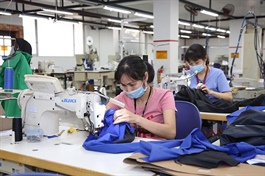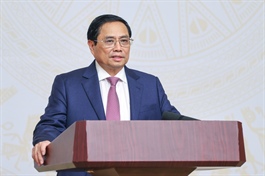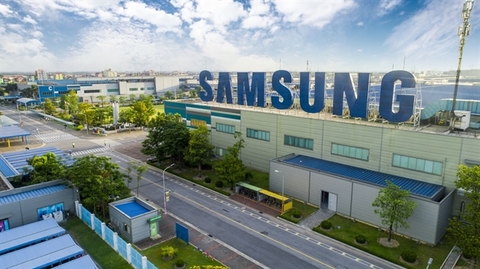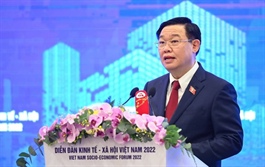Vietnam’s strong economic fundamentals drive favorable outlook: ADB
Vietnam’s strong economic fundamentals drive favorable outlook: ADB
Vietnam’s economy recovered faster than expected in the first half of 2022 and continues to grow amid the challenging global environment.
Vietnam's strong economic fundamentals are driving an economic rebound which maintains its favorable economic outlook for the country with an expansion rate of 6.5% in 2022 and 6.7% in 2023, according to ADB.
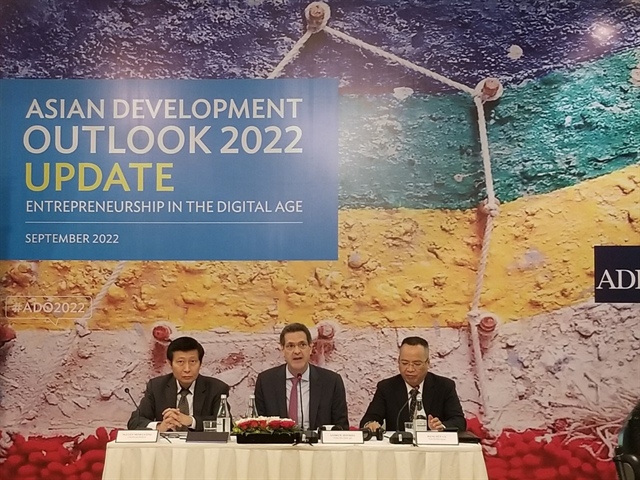
Overview of the meeting. Photo: Hai Yen |
ADB Country Director for Vietnam Andrew Jeffries gave the information during the launch of ADB’s latest economic report today [September 21].
“Vietnam’s economy recovered faster than expected in the first half of 2022 and continues to grow amid the challenging global environment,” said Jeffries who highlighted “The steady recovery was supported by strong economic fundamentals and driven by a faster-than-expected bounce back of manufacturing and services.”
Growth accelerated by 7.7% in the second quarter and averaged 6.4% over the first half—higher than in the same period in 2021 and 2020, but still lower than 6.8% in pre-pandemic 2019.
Principal Country Economist of the ADB in Vietnam Nguyen Minh Cuong added Vietnam’s economy is performing reasonably well amid uncertainties in the global economy.
Cuong also pointed out an improved business environment and revived economic activity that boosted business startups.
In the first eight months of 2022, as many as 101,300 companies were registered, representing a 24.2% increase in their number, which translates into a 16.2% increase in the employed workforce compared to the same period in 2021.
In addition, 48,100 firms resumed operations, up 43.8%, bringing the total number of new and reopened firms to 149,500, up 31.1%.
“Although the supply of labor has normalized, labor-intensive sectors, such as textiles and garments, still face labor shortages due largely to less competitive wages that in part reflect Vietnam's labor market moving into higher value-added sectors,” Cuong said.
In addition, restored global food supply chains will boost agriculture production this year, but high input costs will still constrain the recovery of the agriculture sector.
Cuong suggested softening global demand has slowed manufacturing. The manufacturing purchasing managers’ index in August softened to 52.7 from 54.0 in June. However, the outlook for the manufacturing sector remains bullish given strong foreign direct investments in the sector, he noted.
“Although global geopolitical tensions and tightening financial conditions will continue to limit FDI inflows in 2022, FDI disbursement will be strong on the continued confidence of foreign investors and doing business in Vietnam becoming easier,” Cuong said.
Fully normalized domestic mobility and the lifting of Covid-19 travel restrictions for foreign visitors will support a robust rebound in tourism in the second half of the year, driving the growth of the services sector.
Heightened risks to economic performance
While increasing inflation in the US and the EU has heightened inflationary pressure in the country, Vietnam’s prudent monetary policy and effective price controls, especially gasoline price, should keep inflation in check at 3.8% in 2022 and 4.0% in 2023, unchanged from the projection made in ADB’s report in April.
“Self-sufficiency in the food supply, a recovered domestic supply chain, and the effective control of the prices of key commodities and services (e.g. petroleum, electricity, health care, and education) contained headline inflation at an average of 2.6% in the first 8 months amid spiraling global price pressures,” Cuong noted.
He said the State Bank of Vietnam (SBV), the central bank, has successfully maintained an accommodative but flexible monetary policy to facilitate low-cost financing to help support the economic recovery while containing inflation.
According to the economist, the SBV tightened the reins on a rising US dollar by selling about $7 billion in the first 7 months of 2022 to stabilize the exchange rate, keeping the dong’s depreciation against the US dollar at 2% and leaving the dong more stable than some other currencies in Southeast Asia.
A determined effort by the government to disburse public investment, including the implementation of the Economic Recovery Development Program, would offset the effect of softer exports caused by weaker global demand, he added.
Meanwhile, he expected the SBV will continue to pursue a flexible and prudent monetary policy by continuing to keep its policy rates unchanged. “It will also roll out the interest rate subsidy program to provide low-cost financing for the economy,” he said.
Cuong, however, warned of heightened risks to the economy for the remainder of the year, as an intensification of global geopolitical uncertainties could push up commodity prices, leading to rising inflation in Vietnam.
“A resurgence of Covid-19 infections is possible amid lower readiness in the health care system due to the recent resignations of many health care workers and shortages of medical equipment and drugs,” he said. Meanwhile, a labor shortage would impede the fast recovery of services and the labor-intensive export sector in 2022, not to mention a failure to deliver public investment and social spending as planned could slow growth this year and next.




